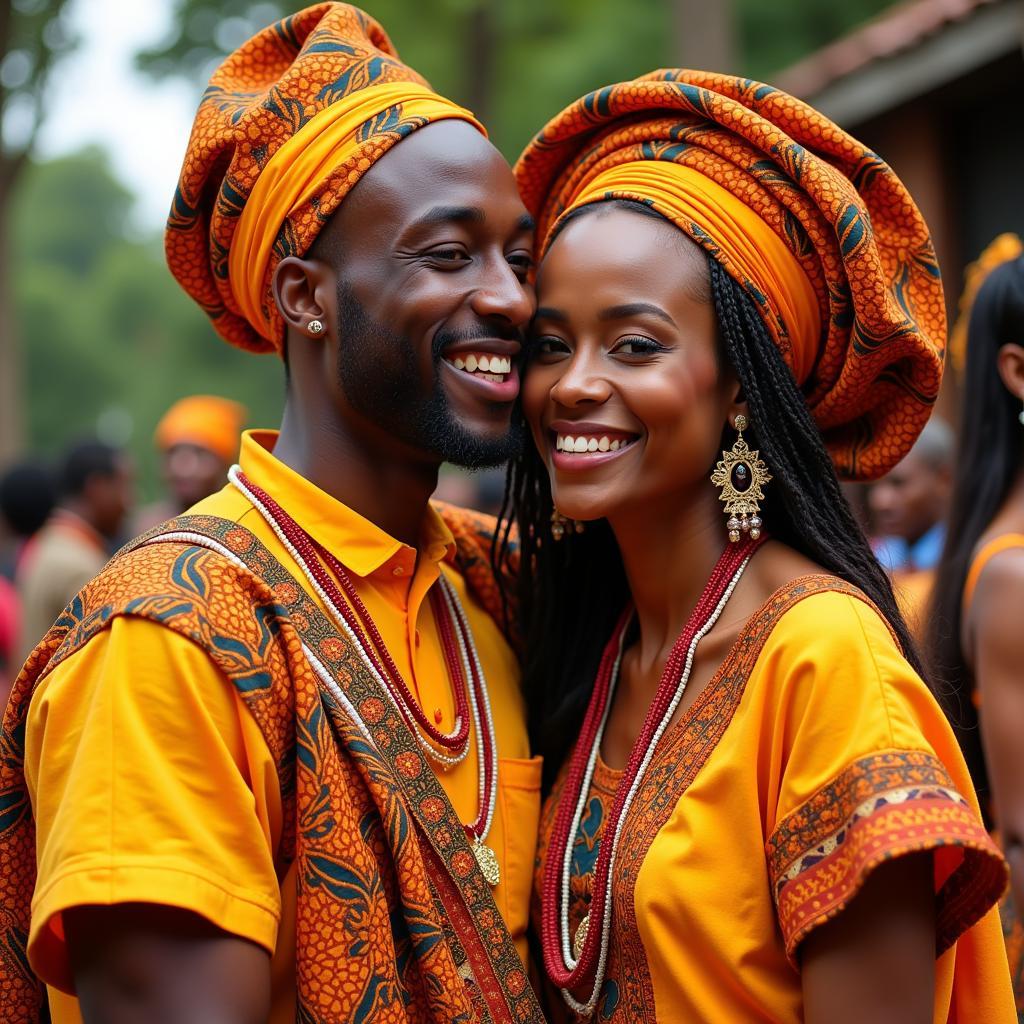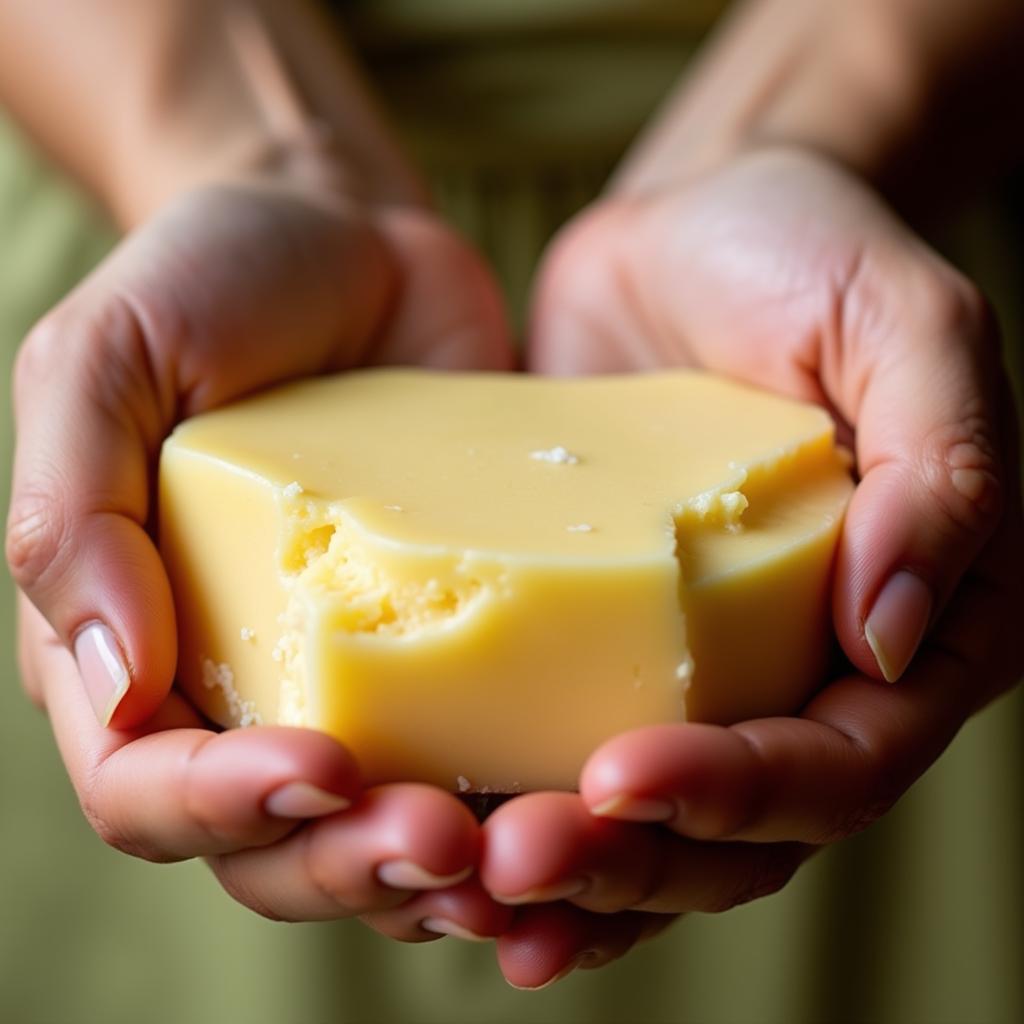The African Hijab: Culture, Style, and Significance
The African Hijab is more than just a headscarf; it represents a rich tapestry of cultural expressions, religious devotion, and evolving fashion trends across the diverse landscape of the African continent. From vibrant colors and intricate patterns to unique draping styles, the African hijab embodies the multifaceted nature of Muslim women’s experiences in Africa.
The Diverse World of African Hijab Styles
The beauty of the African hijab lies in its diversity. Each region, country, and even community often has its own distinct style, reflecting local traditions and influences. While some women opt for simple, elegant wraps, others embrace bold colors, elaborate designs, and luxurious fabrics like silk and lace. This unique blend of modesty and style makes the African hijab a powerful symbol of identity. For more inspiration on styling, check out some african hijab style.
What are the different ways to style an African hijab? Numerous techniques and tutorials are available online and within communities, demonstrating how to achieve specific looks, from everyday simplicity to elaborate creations for special occasions.
This intersection of tradition and modernity has also given rise to a vibrant online community, where women share tips, tutorials, and inspiration, further fostering creativity and cross-cultural exchange.
Beyond the Fabric: The Significance of the Hijab in Africa
The hijab holds deep religious and cultural significance for Muslim women in Africa. It represents a commitment to modesty, piety, and connection to their faith. It’s a visible expression of their identity as Muslim women and a symbol of belonging within a global community. However, the meaning and practice of wearing the hijab can vary greatly across different cultural contexts.
Beyond its religious significance, the hijab is also often seen as a symbol of respect, dignity, and protection. In some communities, it’s a sign of a woman’s marital status or social standing. This rich layering of meaning makes the African hijab a complex and fascinating subject of study.
African Hijab and Fashion: A Modern Renaissance
The African fashion scene has embraced the hijab, incorporating it into contemporary designs and runway shows. Talented designers are creating stunning collections that showcase the versatility and elegance of the hijab, proving that modesty and fashion can go hand in hand.
What impact has the rise of modest fashion had on the African hijab? It has empowered women to express their individuality while staying true to their values. It has also created economic opportunities for designers, entrepreneurs, and artisans involved in the production and distribution of hijab-related products. Explore more about african ladies with turbans.
Navigating Challenges and Embracing Identity
While the African hijab is often a source of pride and empowerment, it can also be a subject of debate and misunderstanding. In some contexts, Muslim women face prejudice and discrimination due to their choice to wear the hijab. However, many women actively challenge these stereotypes, advocating for their right to express their religious and cultural identity freely. Articles about african american islam can offer further insight. You can also see more about african couple fashion ideas.
How do African Muslim women navigate these challenges? Through resilience, education, and interfaith dialogue, they strive to foster understanding and acceptance. They use their voices and platforms to share their stories and perspectives, challenging misconceptions and promoting a more inclusive society.
Conclusion: Celebrating the African Hijab
The African hijab is a vibrant symbol of faith, culture, and style. It represents the diverse experiences of Muslim women across the African continent, showcasing their resilience, creativity, and commitment to their identity. From traditional styles to modern interpretations, the African hijab continues to evolve, reflecting the dynamic interplay of tradition and modernity in Africa. Let’s continue to explore and appreciate the rich tapestry of the African hijab.
FAQ
- What is the significance of the hijab in African culture?
- How do African hijab styles differ from those in other parts of the world?
- Where can I find resources to learn more about African hijab fashion?
- What are some common misconceptions about the hijab?
- How can I support African Muslim women in my community?
- What fabrics are commonly used for African hijabs?
- Are there specific occasions where certain hijab styles are preferred in Africa?
Commonly Asked Questions About African Hijab
- Why do some African women wear hijab? For many, it’s a religious practice and a personal choice expressing their faith and connection to Islam.
- Are all African hijabs the same? No, styles vary greatly across regions, reflecting diverse cultural influences and individual preferences.
- Is it offensive to ask about someone’s hijab? It depends on the context and your relationship with the person. Approaching with genuine curiosity and respect is key.
More Questions to Explore
- How has colonialism impacted hijab styles in Africa?
- What role does the hijab play in African women’s empowerment?
- What are the latest trends in African hijab fashion?
When you need assistance, please contact us at Phone Number: +255768904061, Email: [email protected] Or visit our address: Mbarali DC Mawindi, Kangaga, Tanzania. We have a 24/7 customer support team.

